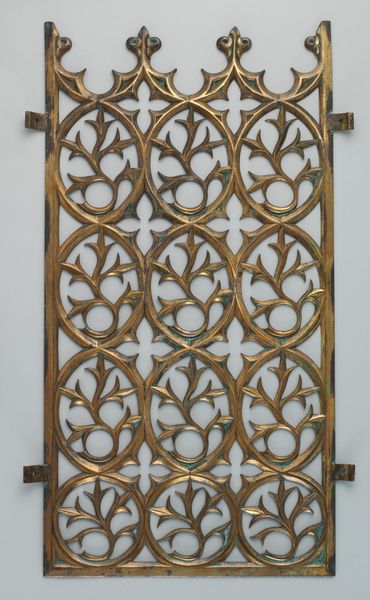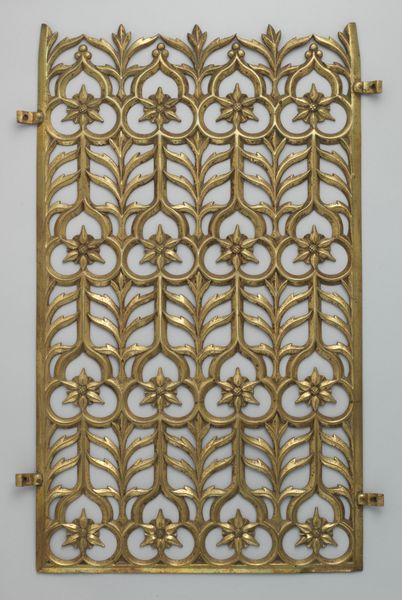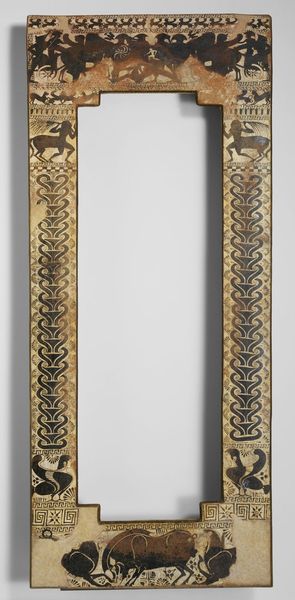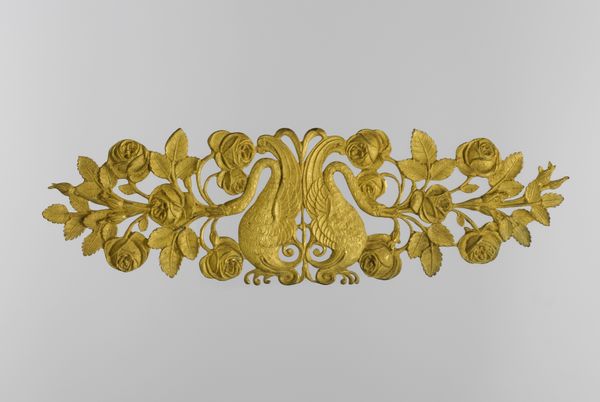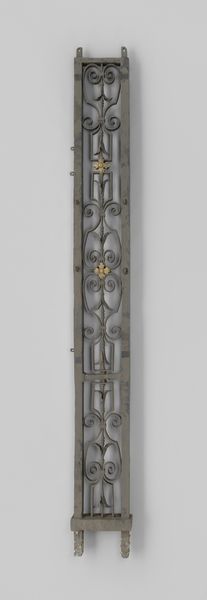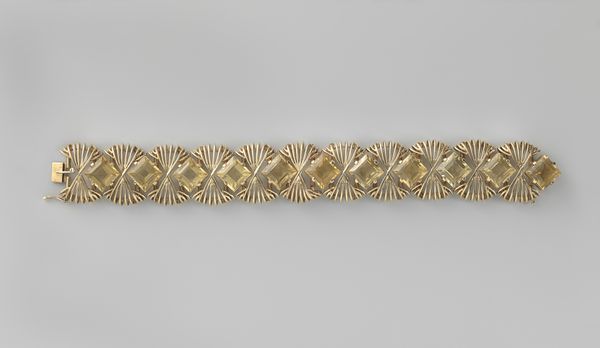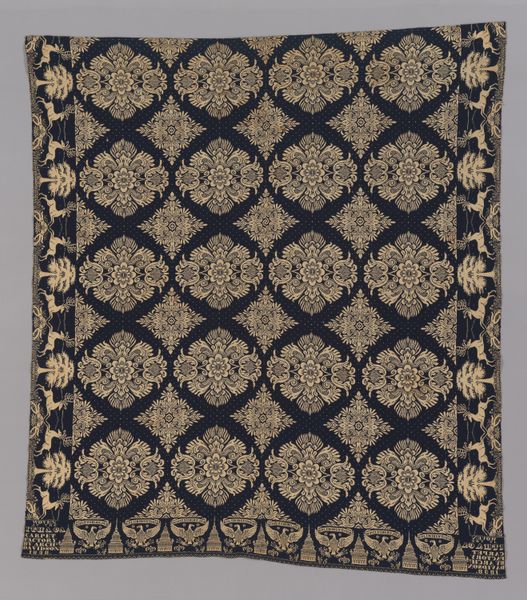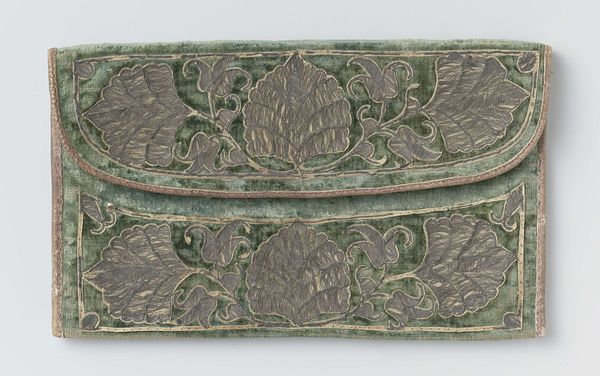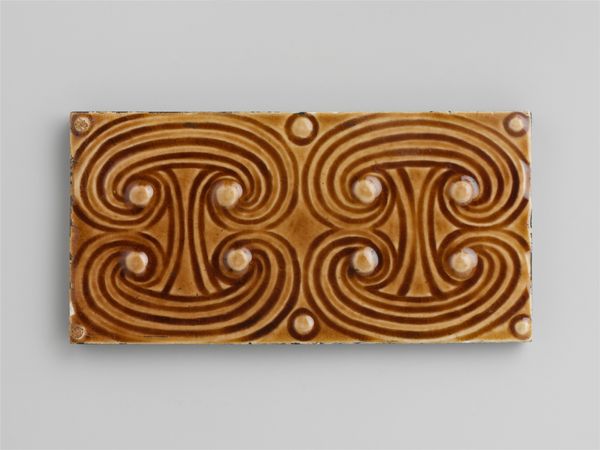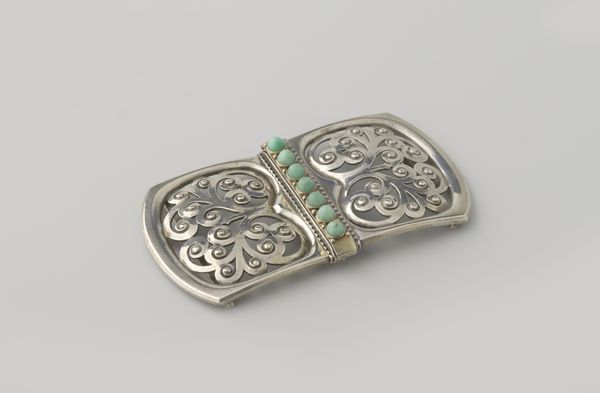
Decorative grill from the Palace of Westminster 1840s - 1850s
0:00
0:00
Dimensions: Overall (confirmed): 21 3/8 × 10 5/8 × 9/16 in. (54.3 × 27 × 1.4 cm)
Copyright: Public Domain
Curator: Here we have a decorative grill, crafted in metal, from the Palace of Westminster, dating from the 1840s to 1850s. It was designed by Augustus Welby Northmore Pugin. Editor: Oh, wow. My first thought? Intricate! And… some sort of heavy metal garden trellis for royal fleurs-de-lis! Seriously, it’s so dense and ornate, like gothic jewelry writ large. Curator: Indeed. Pugin was a leading figure in the Gothic Revival style, deeply committed to its principles and application in every detail, from the grand architectural schemes to the smallest fittings. This grill exemplifies his vision for a unified aesthetic. Editor: It's gorgeous, though! The pattern almost vibrates; a serious exercise in visual rhythm. All those fleur-de-lis, packed tight but flowing somehow. I can totally see why the Victorians loved this level of detail—it's a world apart from the sleekness we often crave today. What was it doing at Westminster anyway? Curator: Pugin was heavily involved in the interiors of the rebuilt Palace after the 1834 fire. He believed that the architectural details should reflect the moral and spiritual values of the society it housed. Grills such as this were incorporated throughout the building, often for ventilation or screening in chapels or private apartments. Its presence signals a commitment to reviving what was seen as a purer, Christian style. Editor: So, like, the visual embodiment of Victorian values? Duty, god, and… metalwork? Ha! But in fairness, it is amazing. The way light plays across the curves… It seems to capture a sense of history itself. I almost feel transported when staring at it, especially knowing its origins! Curator: Precisely. Pugin aimed to recreate a sense of medieval grandeur, associating it with a return to religious and social order. These weren’t simply decorations; they were meant to inspire certain ideals through their very presence within a space of governance. Editor: I find myself both impressed and, like, overwhelmed by that intensity! But, there's also something wonderfully committed and unafraid in all of this detailed expression, right? A statement about values in steel, it almost feels too declarative and powerful for contemporary minimalist tastes. Thanks for the background, it really frames the thing differently for me now. Curator: My pleasure. Looking at Pugin's designs helps us understand the Victorians’ very deliberate effort to construct and promote their idea of society. It's a fascinating and deeply political approach to aesthetics, which still holds many resonances today.
Comments
No comments
Be the first to comment and join the conversation on the ultimate creative platform.

